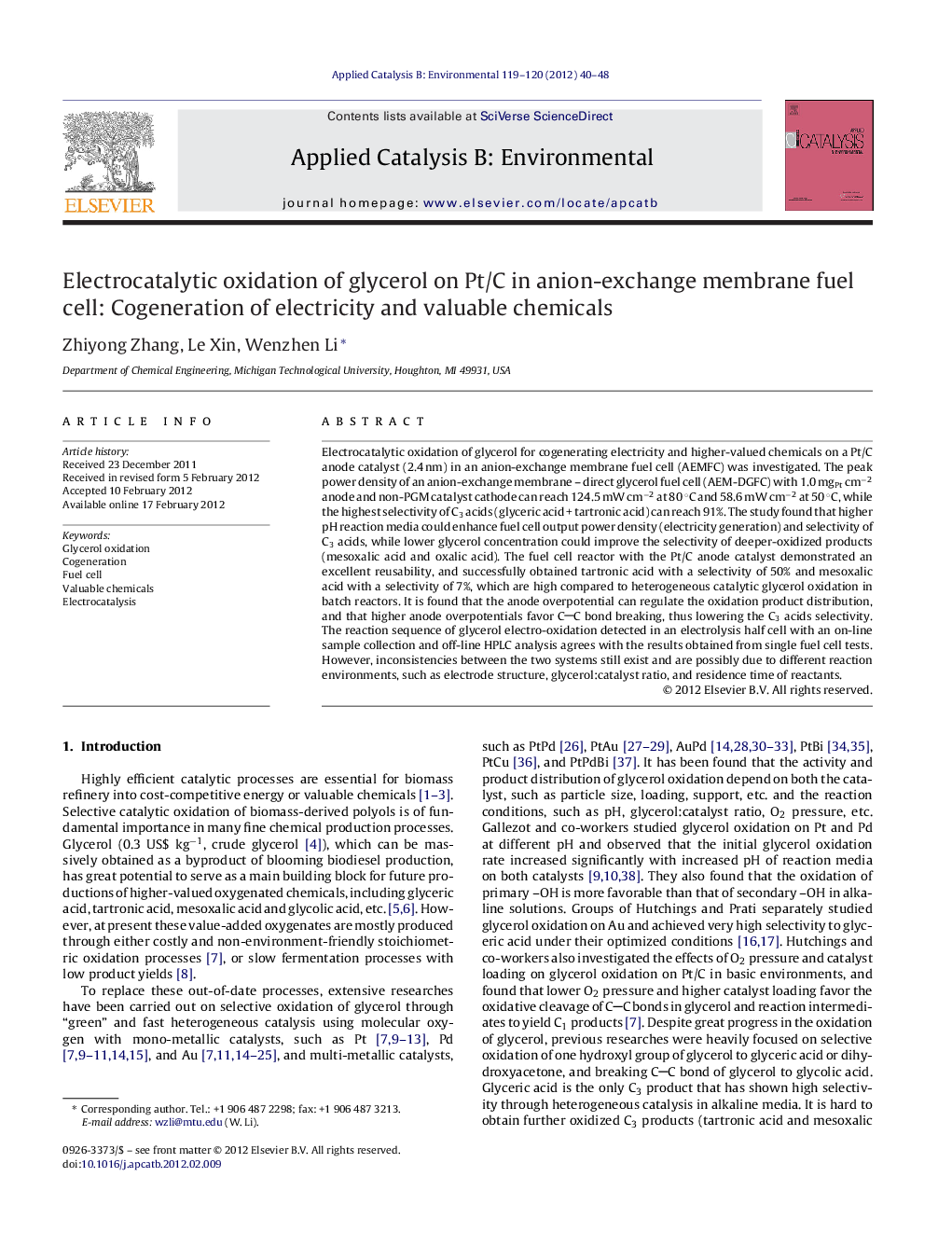| کد مقاله | کد نشریه | سال انتشار | مقاله انگلیسی | نسخه تمام متن |
|---|---|---|---|---|
| 46634 | 46444 | 2012 | 9 صفحه PDF | دانلود رایگان |

Electrocatalytic oxidation of glycerol for cogenerating electricity and higher-valued chemicals on a Pt/C anode catalyst (2.4 nm) in an anion-exchange membrane fuel cell (AEMFC) was investigated. The peak power density of an anion-exchange membrane – direct glycerol fuel cell (AEM-DGFC) with 1.0 mgPt cm−2 anode and non-PGM catalyst cathode can reach 124.5 mW cm−2 at 80 °C and 58.6 mW cm−2 at 50 °C, while the highest selectivity of C3 acids (glyceric acid + tartronic acid) can reach 91%. The study found that higher pH reaction media could enhance fuel cell output power density (electricity generation) and selectivity of C3 acids, while lower glycerol concentration could improve the selectivity of deeper-oxidized products (mesoxalic acid and oxalic acid). The fuel cell reactor with the Pt/C anode catalyst demonstrated an excellent reusability, and successfully obtained tartronic acid with a selectivity of 50% and mesoxalic acid with a selectivity of 7%, which are high compared to heterogeneous catalytic glycerol oxidation in batch reactors. It is found that the anode overpotential can regulate the oxidation product distribution, and that higher anode overpotentials favor CC bond breaking, thus lowering the C3 acids selectivity. The reaction sequence of glycerol electro-oxidation detected in an electrolysis half cell with an on-line sample collection and off-line HPLC analysis agrees with the results obtained from single fuel cell tests. However, inconsistencies between the two systems still exist and are possibly due to different reaction environments, such as electrode structure, glycerol:catalyst ratio, and residence time of reactants.
Figure optionsDownload as PowerPoint slideHighlights
► Pt/C with a small diameter (2.5 nm) and narrow distribution (2–4 nm) was synthesized.
► Chemicals and electricity cogeneration from glycerol in fuel cell was demonstrated.
► Valuable tartronic acid (50%) was produced on Pt/C catalyst in alkaline solution.
► Potential can regulate the product distribution of glycerol electro-oxidation.
► The concentrations of KOH and glycerol strongly affect oxidation product yields.
Journal: Applied Catalysis B: Environmental - Volumes 119–120, 30 May 2012, Pages 40–48